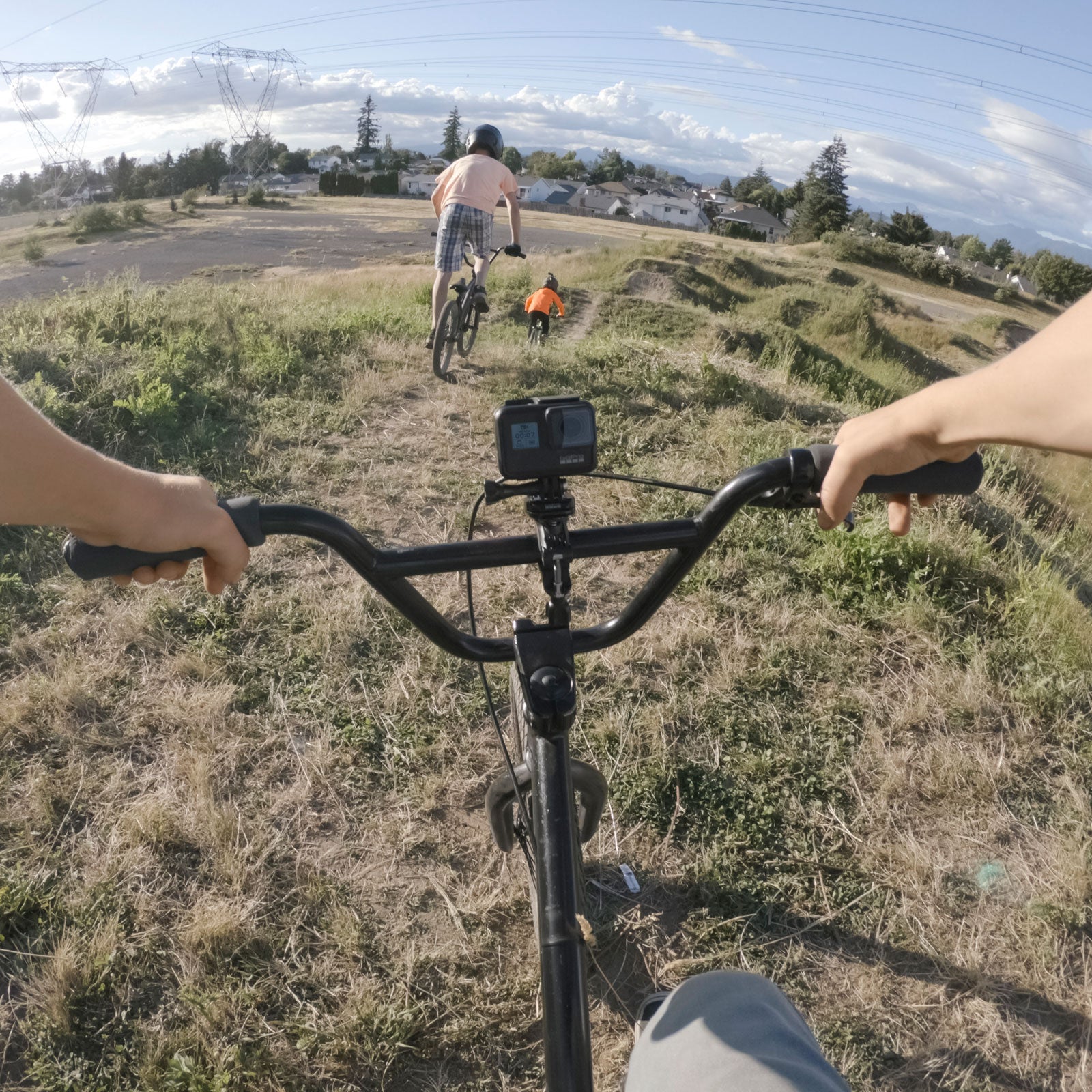The thing about action cams is that they’re designed to capture the action—which means they get jostled around a fair bit while filming. It doesn’t matter how cool your mountain-bike jump is or that you sent a new climbing route, shaky footage is unwatchable. That’s why handheld gimbals are so popular. But what if you could get gimbal-like stabilization straight from the camera itself? That’s what GoPro promises with the new , announced Thursday.
What’s New

Smoother Stabilization
GoPro dubbed its new stabilization HyperSmooth. It’s done digitally, meaning the camera captures whatever’s in the frame but crops 10 percent of the image around the border, which acts as a buffer for cleaner motion. Last year’s Hero6 had a more primitive version of the tech, and there’s big improvement in the Hero7. It handles small bumps much better and does a killer job of eliminating vibration. Is it really gimbal-like, as GoPro CEO Nick Woodman claimed at the press event in New York a few weeks ago? The footage is certainly smoother and easier on the eyes (and the stomach). It also works in almost every resolution and frame rate, including 4K60, which the Hero6 Black couldn’t do.
Time Lapse
The Hero7 has an improved time-lapse mode called TimeWarp. As in previous models, you can still make time-lapse footage available instantly via WiFi and then bounce it to Instagram straight from your phone. TimeWarp adds HyperSmooth stabilization to that footage, to keep the shot from bouncing around as much. This is something that smartphones have been able to do for a few years now, and it’s great to see it in an action cam. The results are particularly good with GoPro’s wide-angle lens.
Auto Mode
Then there’s SuperPhoto, GoPro’s new auto mode for still shots. It reads the scene and changes settings to make photos look as crisp as possible. So if you’ve got a lot of backlighting, and there isn’t much movement going on in the frame, the camera switches to HDR (high dynamic range) to boost detail from light to dark areas. If it senses low light, it automatically filters out the digital noise to reduce graininess. The Hero7 uses the same image sensor as the Hero6 Black, so you probably won’t see a dramatic difference, but SuperPhoto could save a picture from being a blacked-out dud.
GoPro also (finally) added a photo timer, so you can set up the camera and get yourself into a shot before the shutter snaps.
Other Goodies
The Hero7 Black supports vertical video. Generally, vertical footage looks terrible on YouTube and on TV and computer screens, but if you’re shooting for Instagram, it can be handy. Previously, you’d have to manually rotate your footage with editing software. Now GoPro will do it for you.
This is also the first GoPro that supports live-streaming to a number of platforms, including Facebook and YouTube (though not Instagram). Simply pair the Hero7 with your phone via WiFi, open the GoPro app, select the platform you want, and start filming.
Lastly, GoPro revamped the user interface for the Hero7, making it more swipe based, like a smartphone. The UI is a bit more streamlined, too, putting the most-used features front and center and hiding the pro-level stuff unless you want to see it. The Hero7 has some other nice tricks, like slo-mo video playback and a ShortClips mode, which limits videos to 10 or 15 seconds.
What’s Staying the Same
Apart from the new software features, the Hero7 Black is basically the same camera as last year’s Hero6 Black. Same CMOS 1/2.3-inch image sensor, same impressive frame rates (including 4K60 and 1080p at 240 fps for smooth slo-mo), same waterproofing down to 33 feet, and the same shape. The only thing that’s different is an improved microphone system, with cleaner sound and better dynamic range.
The Upshot
The Hero7 Black is a nice step up from the Hero6. HyperSmooth is the most noteworthy improvement. Will it make gimbals extinct? No, but gimbals aren’t always a good solution. They’re bulky, so you can’t casually strap one to your helmet. They also tend to fail in high wind—say, while skydiving. So while the Hero7’s stabilization may not be quite as good as what you get from a gimbal, it’s the best available without rigging up your camera.
GoPro is also offering the Hero7 in Silver and White versions. The Silver is the middle-tier option; it shoots 4K at up to 30 fps, is also waterproof to 33 feet, and has voice controls and GPS, but lacks some of the advanced features, including image stabilization. The Hero7 White is lower on the totem pole, topping out at 1080p and 60 fps. It’s still waterproof and has voice controls. The Silver and White will go for $300 and $200, respectively.
The GoPro Hero7 Black is available for preorder now and will launch on September 30 in the U.S. It will run you $400—$100 cheaper than the Hero6 at launch. This isn’t a total reworking of the camera; the Hero7 is more of a spec bump, but there’s plenty to be excited about.


